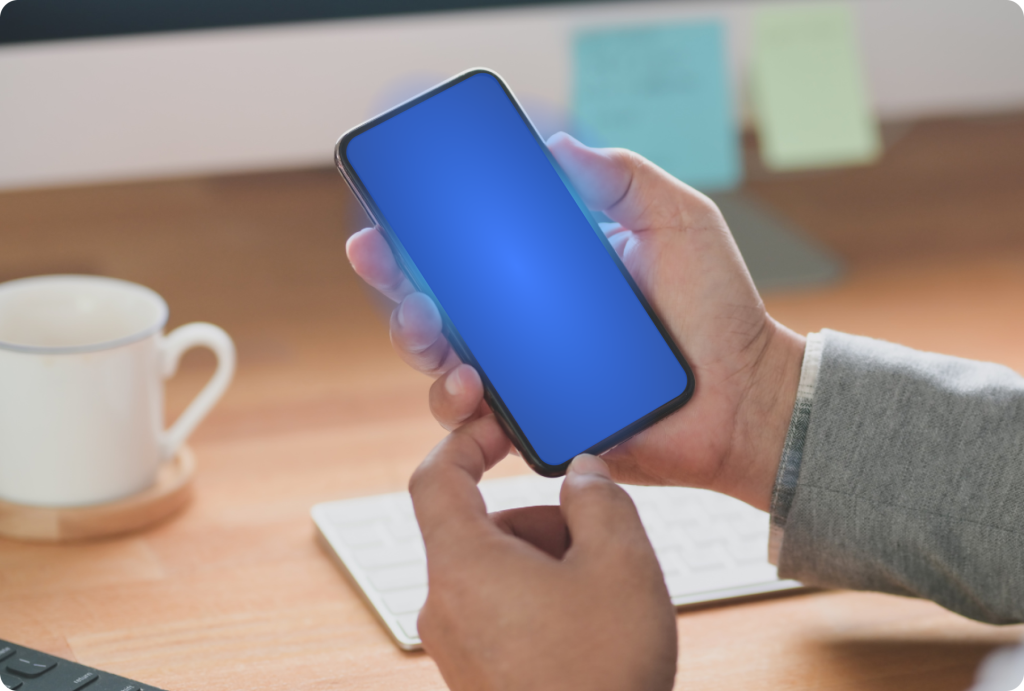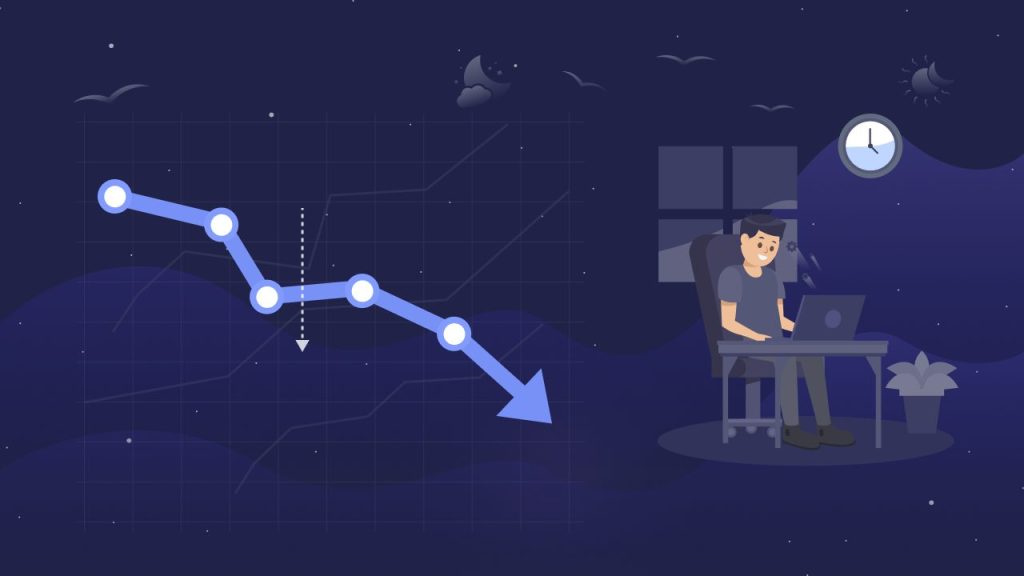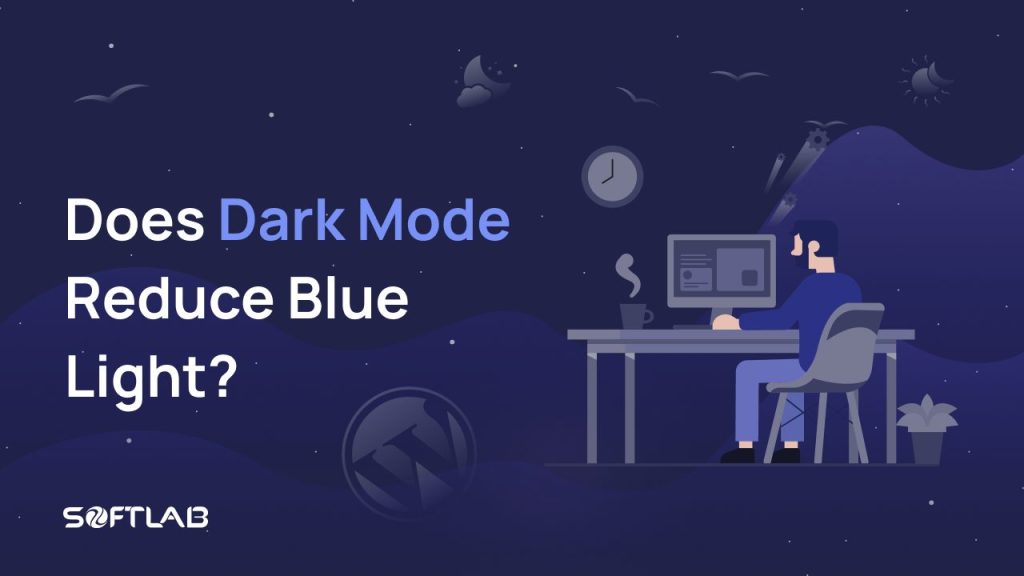Yes, dark mode can reduce blue light exposure, but the extent of reduction depends on the specific implementation and the type of display technology used.
When dark mode is activated on a device, the user interface shifts from a bright background with dark text to a dark background with light text. This change in the color scheme impacts the amount of blue light emitted by the screen.
Blue Light Disadvantages for Eyes

Blue light has become a topic of concern due to its widespread presence in digital devices and artificial lighting. While blue light has some positive effects during daytime hours, excessive and prolonged exposure can have disadvantages for our eyes.
Let’s delve into the details of the potential disadvantages of blue light for the eyes:
Digital Eye Strain (Computer Vision Syndrome)
Extended periods of screen time on digital devices such as computers, smartphones, and tablets can lead to digital eye strain. Staring at screens for prolonged periods causes the eyes to work harder to focus, leading to symptoms like dryness, irritation, blurred vision, headaches, and even double vision. Blue light emitted from these screens may contribute to eye strain by causing the eyes’ focusing muscles to tire more quickly.
Read Also: Is Dark Mode Better for Eyes?
Disruption of Circadian Rhythm
Blue light, particularly in the evening and nighttime, can interfere with our circadian rhythm, the natural sleep-wake cycle. Exposure to blue light in the evening can suppress the production of melatonin, a hormone that regulates sleep. This disruption can lead to difficulties falling asleep, reduced sleep quality, and ultimately, sleep deprivation. Chronic sleep disturbances can have a negative impact on overall health and well-being.
Macular Degeneration Risk
Some studies suggest that prolonged exposure to high-energy visible (HEV) blue light may increase the risk of age-related macular degeneration (AMD). The macula is a small part of the retina responsible for central vision and color perception. Over time, exposure to blue light can cause damage to the cells in the macula, potentially leading to AMD, which is a leading cause of vision loss in older adults.
Phototoxicity and Retinal Damage
Blue light has a shorter wavelength and higher energy than other visible light, making it more likely to scatter and cause glare. When the eye is exposed to high-intensity blue light, especially from artificial sources like LED lighting, there is a potential risk of phototoxicity. This can cause damage to the cells of the retina, increasing the risk of various eye conditions.
Dry Eyes and Reduced Blink Rate
Studies have shown that blue light exposure can lead to reduced blink rates while using digital devices. A lower blink rate can contribute to dry eyes because blinking helps distribute tears across the eye’s surface, keeping it moist and lubricated. Insufficient blinking can lead to dry, irritated eyes and an increased risk of developing dry eye syndrome.
Eye Fatigue and Reduced Contrast Sensitivity
Blue light scatters more than other colors, which reduces contrast and can lead to a perception of reduced sharpness and clarity. Prolonged exposure to blue light can lead to eye fatigue, making it harder to maintain visual focus and process details in digital content.
How Does Dark Mode Reduce Blue Light?

Dark mode reduces blue light exposure by employing a color scheme that predominantly uses dark backgrounds with light-colored text or elements. This change in the color scheme impacts the amount of blue light emitted by digital devices’ screens.
Let’s explore how dark mode achieves this reduction in blue light in detail:
Dark Backgrounds
In dark mode, user interfaces display dark backgrounds instead of the traditional bright white backgrounds seen in light mode. The dark backgrounds are typically black or various shades of gray. These dark colors do not emit as much light as bright colors, leading to reduced overall screen brightness.
Pixel Activation in OLED/AMOLED Screens
Devices with OLED (Organic Light Emitting Diode) or AMOLED (Active Matrix Organic Light Emitting Diode) screens can effectively reduce blue light in dark mode. Unlike traditional LCD (Liquid Crystal Display) screens, which use a backlight to illuminate pixels, OLED and AMOLED screens can turn off individual pixels to display true black.
In dark mode, large portions of the screen can remain completely black, as these pixels are turned off. Since blue pixels are not activated in these dark areas, the blue light emitted from the screen is significantly reduced.
Blue Light Spectrum and Brightness
Blue light falls within the high-energy visible (HEV) light spectrum and has a shorter wavelength compared to other colors. The shorter wavelength and higher energy of blue light make it more likely to scatter, which can contribute to glare and discomfort during extended screen use.
By using dark mode and reducing the amount of blue light emitted, digital devices emit less glare and provide a more comfortable viewing experience, especially in low-light conditions.
Circadian Rhythm Impact
Another advantage of dark mode’s blue light reduction is its potential impact on the body’s circadian rhythm. Exposure to blue light, especially in the evening and nighttime, can disrupt the natural sleep-wake cycle by suppressing the production of melatonin, a hormone responsible for promoting sleep.
Dark mode’s reduction in blue light emission during evening and nighttime usage may help mitigate the negative effects of blue light on the circadian rhythm, promoting better sleep patterns and improved sleep quality.
Eye Strain Reduction
Dark mode can also contribute to reducing eye strain caused by prolonged screen use. In traditional light mode, the high brightness and blue light content can cause the eyes to work harder to focus, leading to digital eye strain.
By using dark backgrounds in dark mode, the contrast between the dark background and light-colored text is reduced, which can help alleviate eye strain and discomfort during extended screen time.
Conclusion
Dark mode does reduce blue light exposure to a certain extent, providing a more eye-friendly and comfortable viewing experience for users. From a medical perspective, you should try to eliminate blue light from your device display. And the most efficient way is to enable dark mode to eliminate blue light exposure from digital technology-enabled displays.
